Who invented the lamington? The answers may surprise you
By Chris Currie | 19 October 2023
There is only one thing Australians love more than tucking into a fresh lamington: arguing over who invented it.
The simple square of sponge cake dipped in chocolate and rolled in desiccated coconut has sparked decades of debate, and countless claims over exactly how the delicious treat came about.
For now, let’s look at the many claims on Australia’s favourite sweet treat.
Was the lamington invented in Ipswich or Cloncurry?
One of the most entertaining (and almost completely unreliable) stories was shared by social commentator John Hepworth, writing in a 1977 edition of Nation Review.
As the story goes, during a banquet in the North West Queensland town of Cloncurry, a piece of sponge cake was accidentally dropped into a bowl of gravy before being thrown into a dish of shredded coconut. A “respectable widow” at the same banquet was inspired to switch gravy for chocolate and thus the lamington was born.
One of the most vocal claims to the lamington’s origin comes from the South East Queensland city of Ipswich. Locals suggest lamingtons were served by a female chef or created by accident by a “nervous maid” at the opening of Ipswich Technical College.
Unfortunately, the first recipe for lamingtons appeared in Queensland Country Life on 17 December 1900, predating the opening of the college in 1901. Lord Lamington did, however, lay the foundation stone for the building in June 1900, but there is no mention of refreshments in newspaper reports.
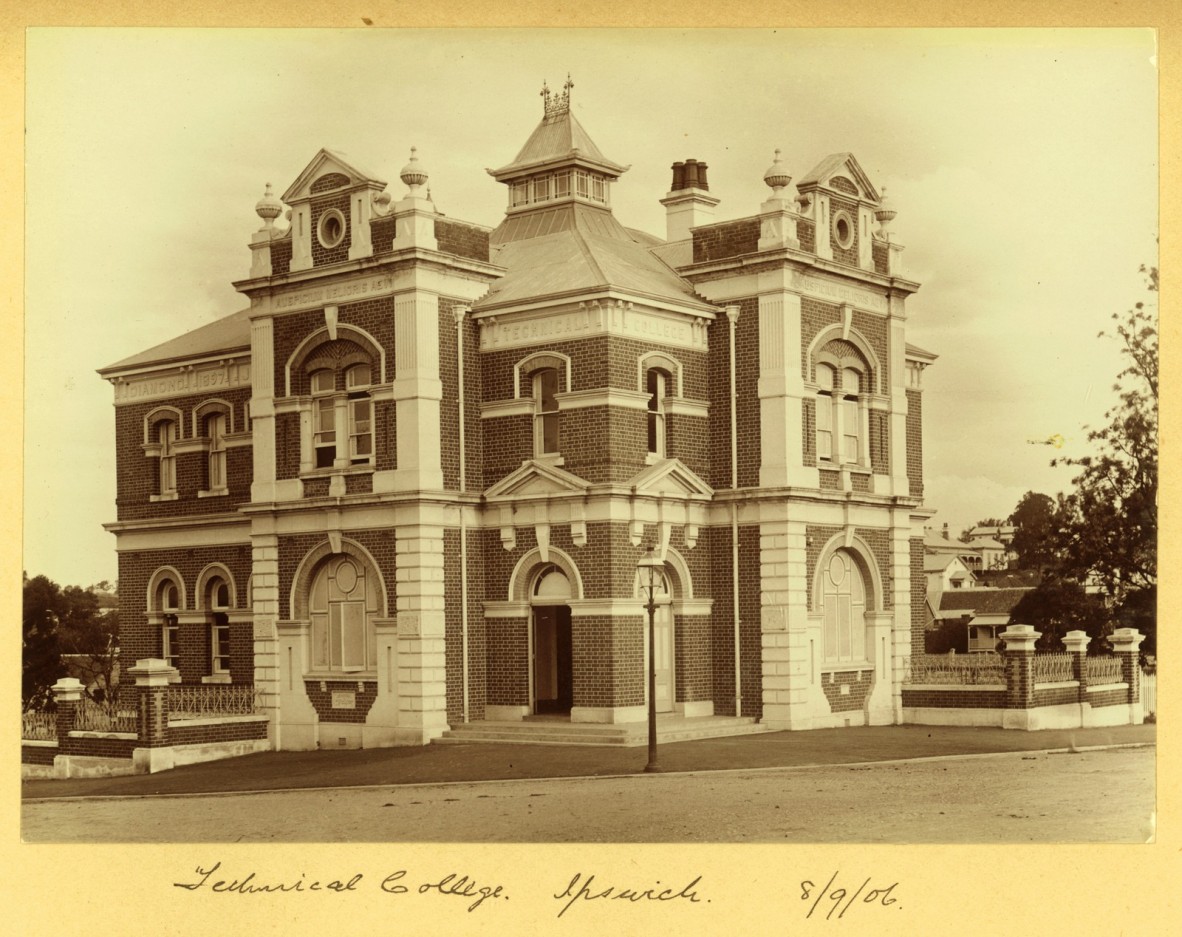
Ipswich technical college, 1906.
Was the lamington invented in New Zealand?
In 2014, an elaborate April Fool’s Day hoax claimed lamingtons were invented in New Zealand and were actually called Wellingtons, citing a fake artwork from 1888.
Other countries have more solid claims on the lamington, including Scotland, whose village of the same name has been anecdotally linked to the lamington’s origins.
Possible precursors and contemporary recipes include the English Neapolitane Roll; America’s Cleveland Coconut Bar; Croatian Čupavci; South Africa’s Ystervarkies, Hungarian kókuszkocka; Mauritian Gateau Carre Rouge; even St Helena Island, one of the world’s most isolated places, celebrates nearly every occasion with coconut fingers.
The first recorded lamington recipe, from the 17 December 1900 edition of ‘Queensland Country Life’, courtesy of Trove.
Was the lamington named after Lord Lamington?
The man most often associated with the lamington is 2nd Baron Lamington Charles Wallace Alexander Napier Cochrane-Baillie, better known as Lord Lamington, who served as the eighth governor of Queensland from 1896 to 1901.
The connections to Queensland’s Governor range from the plausible (they were invented for one of his many official engagements) to the ridiculous (they were inspired by the image of the Governor’s dandruff on his brown homburg hat).
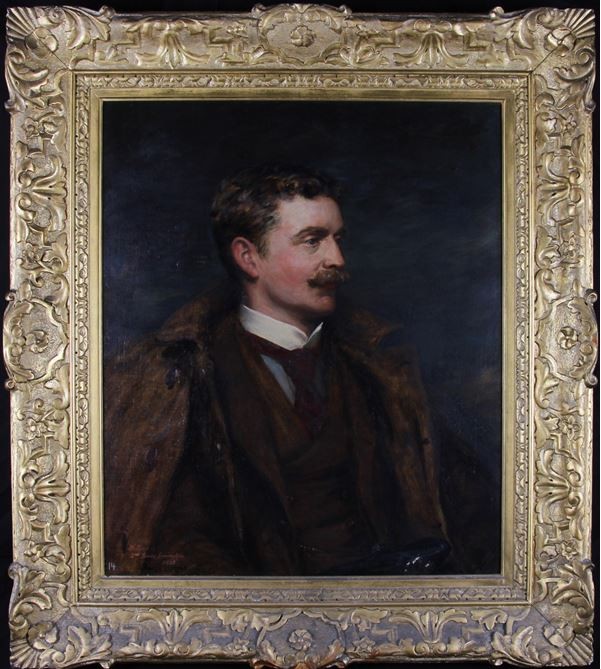
Since 2016, this 1895 portrait of Charles Cochrane-Baillie, 2nd Baron Lamington by Robert Duddingstone Herdman has been on loan to Government House, Brisbane.
Lord Lamington is widely purported to have referred to lamingtons as “those poofy woolly biscuits”, a line often attributed to a book by James Shrimpton titled Australia: The tale of Baron Lamington and an improvised cake. This “book” is in fact a 2007 article for the New Zealand Herald.
The most widely-held theory is that lamingtons were invented by accident or by necessity in Lord and Lady Hamilton’s kitchen. But which kitchen, and by whose hands?
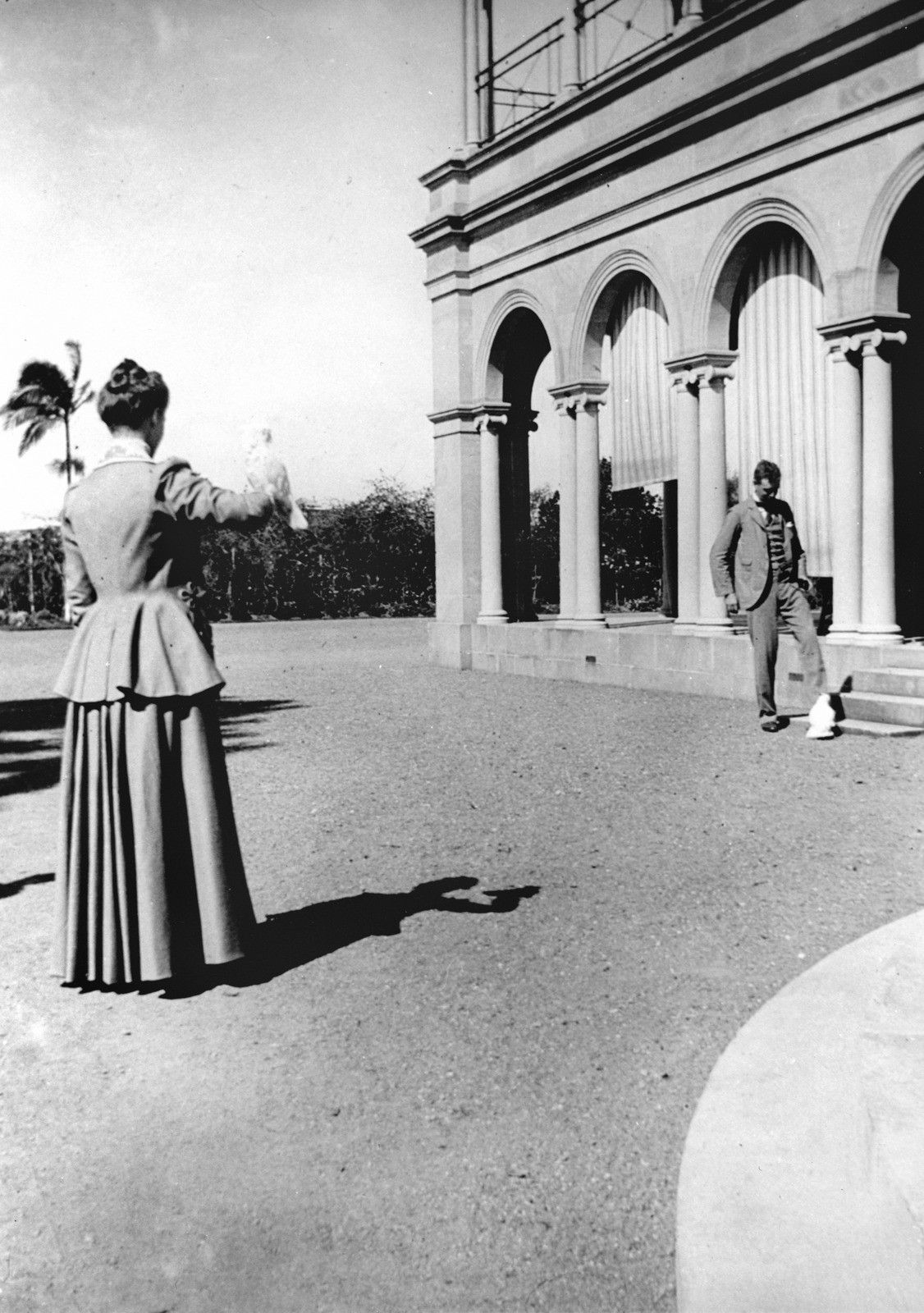
Lord and Lady Lamington, Government House, Brisbane, 1898.
Was the lamington invented by Armand Galland?
French-born chef Armand Galland worked for Lord and Lady Lamington as their chef de cuisine, and is often credited with the invention of the lamington. Some historians are certain that he created it at the Governer’s official residence in Brisbane, now known as Old Government House.
Part of Galland’s duties were preparing refreshments for Government House “At Home” events, often held as garden parties at the property to quite literally celebrate afternoons the Lamingtons were at home. Up to 1200 people could be in attendance, with official guest lists accompanied by unofficial partygoers attracted by open invites placed in newspapers.
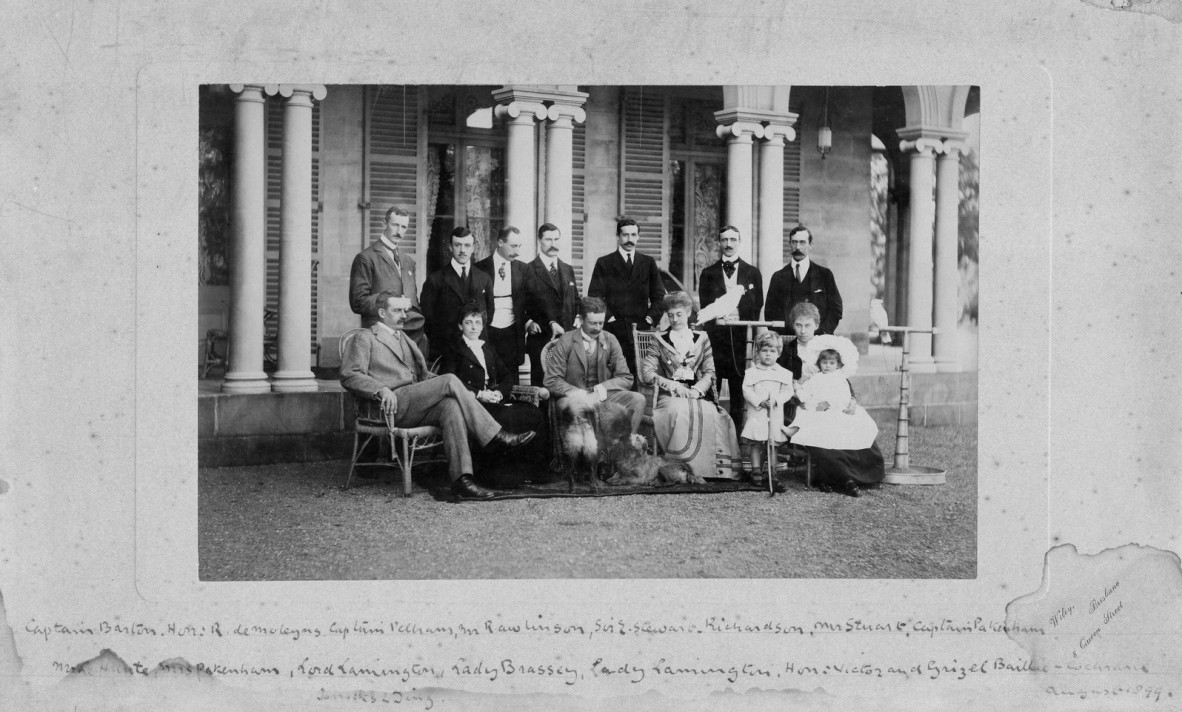
Lord and Lady Lamington, their children, staff and guests at Government House, Brisbane, 1899 (This photograph may have been taken prior to the 'At Home' at Government House held on 28 July 1899.)
The lack of pre-determined numbers meant that the Governor’s staff often had to rely on estimation and ingenuity to feed unexpected guests. It is possible, then, that Galland created the lamington with this purpose in mind.
Some stories suggest that it was instead an unnamed Government House maid who, faced with only stale cake at her disposal, covered it in chocolate and coconut in an effort to disguise it.
Was the lamington invented in Toowoomba?
Lord and Lady Lamington regularly escaped the humidity of Brisbane for the cooler climes of Toowoomba, some 120km inland, where they leased the grand Harlaxton House between late 1900 and early 1901.
According to local legend, Lord Lamington was partial to small round cakes with whipped cream known as “snowballs” and requested some for afternoon guests. The cook on duty (commonly identified as Harlaxton House temporary chef Fanny Young), was horrified to find that none of the equipment and ingredients she needed were present in the kitchen.
According to Toowoomba Regional Council, “The cook improvised by making a big plain cake which she cut into oblongs, icing the tops and sides with chocolate and sprinkling with coconut.”
The guests loved the cakes, as the story goes, and dubbed them “Lord Lamington’s Cakes.”
Whatever the truth, Toowoomba can lay claim to the largest lamington in history, as certified by the Guinness Book of Records!
Colour tinted postcard of Spring Bluff Station, near Toowoomba. The station was built in the 1860s to allow trains a place to stop during the steep climb from Brisbane to Toowoomba. The image is taken from the Journal of Mary, Lady Lamington.
Did Lady Lamington or Amy Schauer invent the lamington?
While many of the most popular lamington theories are devoted to men, there is a strong case that links two influential women to its invention.
Annabella Mary Elizabeth Haughton Hozier, better known as Lady Lamington (or Mary), certainly oversaw catering at Government House and Harlaxton House, but it is her involvement with a new cookery school at Brisbane Technical College that is of most interest.
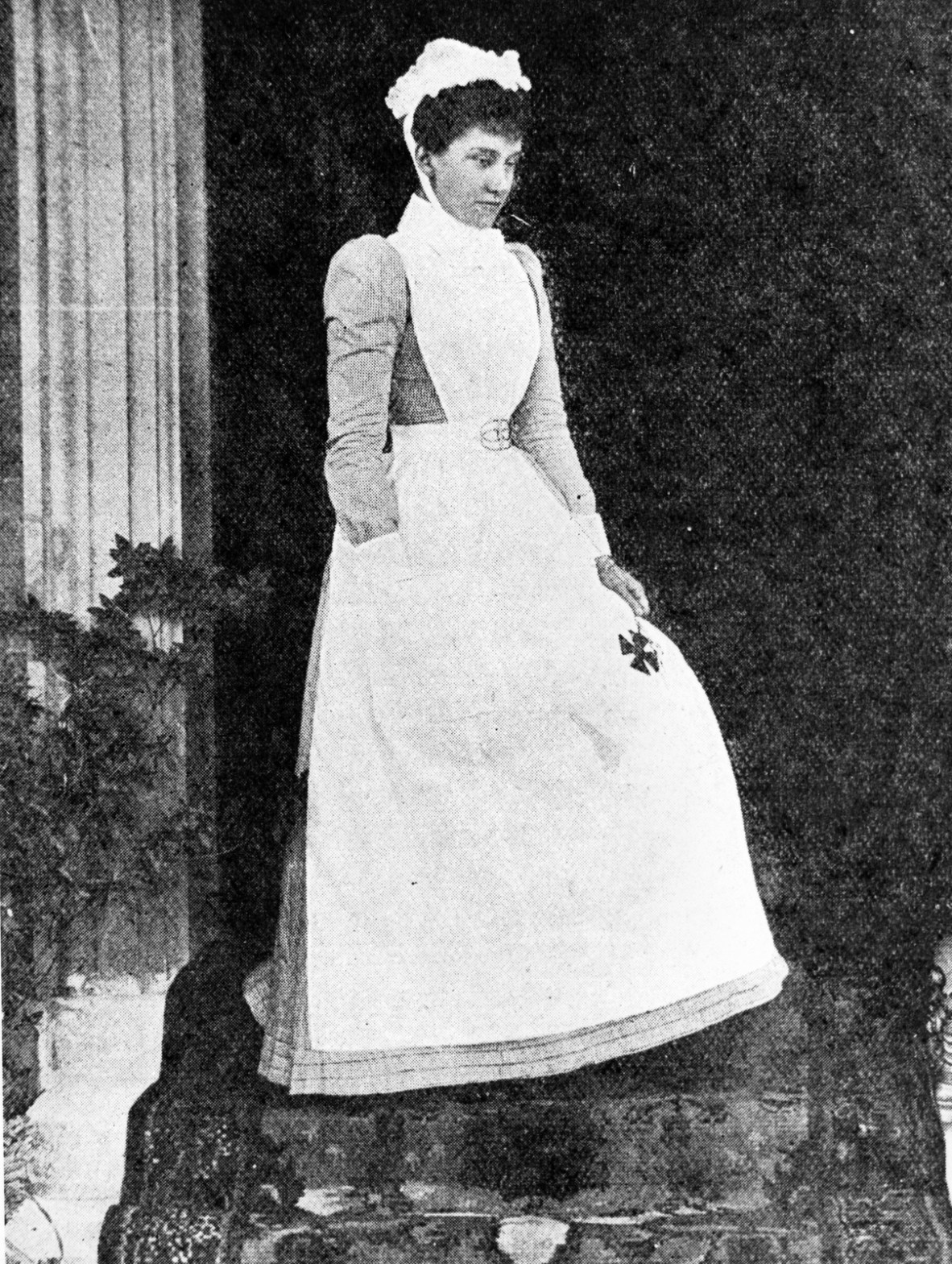
Lady Lamington in a nurse’s uniform, at the Brisbane Poster Ball, 1900.
Lady Lamington, who often presented prizes for students at the college, opened the cooking school on 2 May 1900, where its head teacher Amy Schauer provided a cooking demonstration and met “intending students”.
According to her diaries, Lady Lamington attended wood-carving and cooking classes at the college, along with studying and passing examinations for first aid and home nursing.
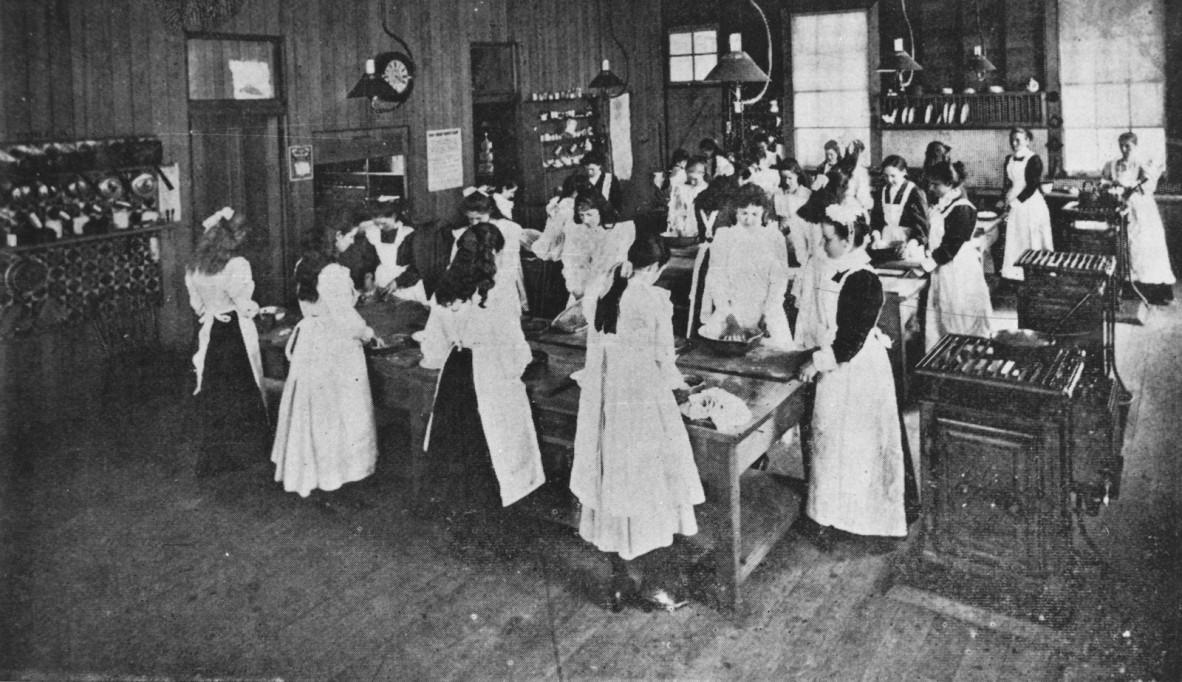
Cooking class at Brisbane Technical College, ca. 1900
Amy Schauer would go on to become one of the state’s most influential cooks, with her oft-reprinted The Schauer Australian Cookery Book becoming the culinary bible for generations of Queenslanders.
Notably, Miss Schauer’s name is the first to appear in print against a recipe for lamington, in The Queenslander on 26 November 1904. An earlier recipe, from the same paper in 1902, attributes the recipe for lamington cake to “a Subscriber”.
While there is no direct evidence, it is very possible that Lady Lamington passed the recipe onto culinary icon Amy Schauer. Interestingly enough, Armand Galland later acted as an examiner at the very same college.
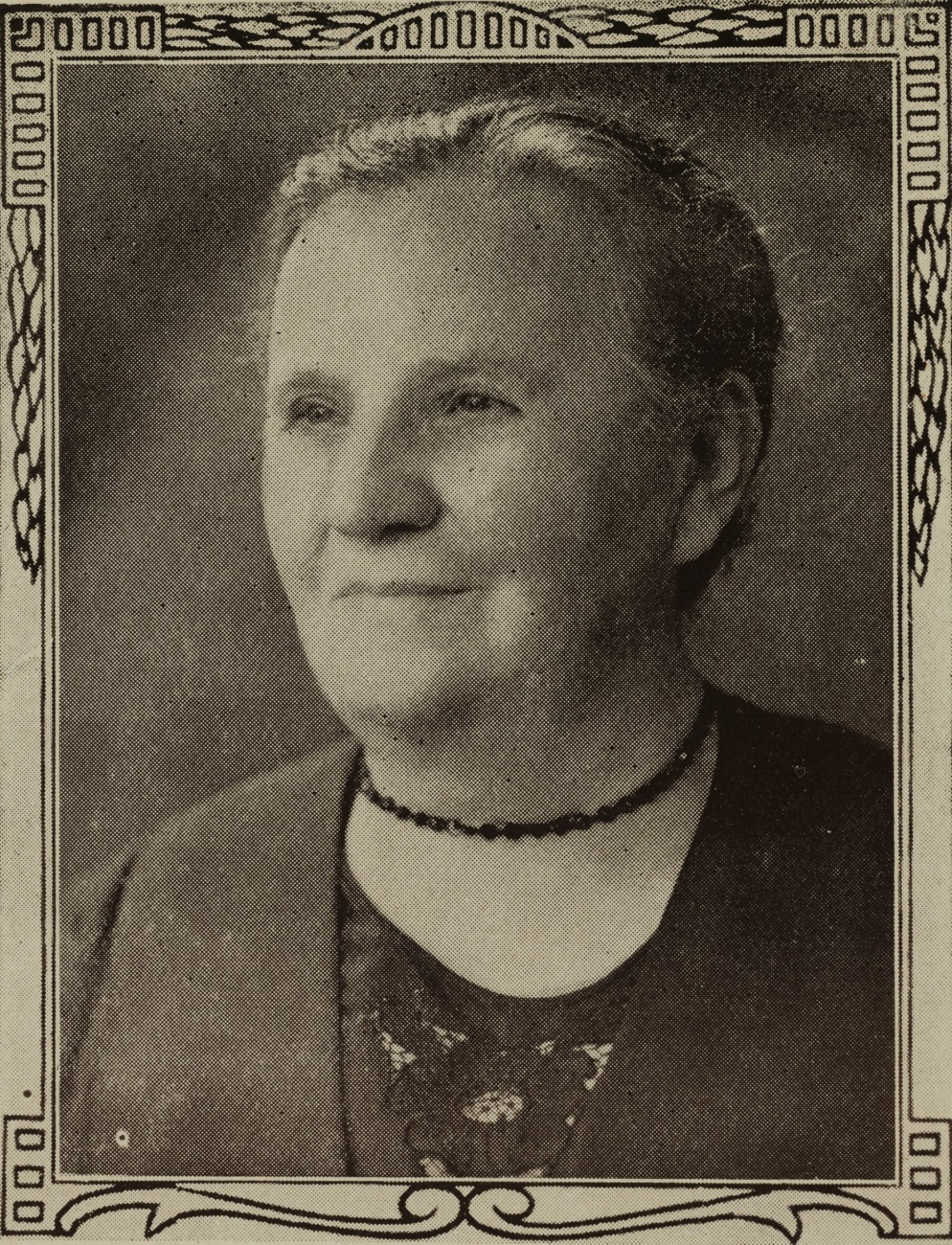
Portrait of Miss Amy Schauer.
The final word on who invented the lamington
The final word on the origins of the lamington must go to Emeritus Professor Maurice French, who has quite literally written the book on the subject.
Professor French, author of The Lamington Enigma: a survey of the evidence, provides an exhaustive exploration of the origins of the lamington.
As to who invented it? Well, you’ll have to listen to Cake: the Podcast, where Professor French puts forth some very interesting theories!
As to whether you should put jam in your lamingtons, or cream, or even lemon curd, well, that’s a whole other story …
Further reading
- Journal of Mary, Lady Lamington, 1910, Lady Mary Lamington, John Oxley Library, State Library of Queensland, Record number 99183599916702061
- Lamington Family Visitors' Book, 1869-1920, Lady Mary Lamington, John Oxley Library, State Library of Queensland, Record number
99183653219502061 - New accessions: Portrait of Queensland's 8th Governor, Lord Lamington, State Library of Queensland John Oxley Library Blog, viewed 19 October 2003
- Maureen R. Lillie, 2002, 'Lady Lamington and the year of left hand gloves', Queensland Museum Network, https://www.museum.qld.gov.au/collections-and-research/memoirs/culture-2/mqm-c2-2-5-lillie, viewed 19 October 2023.
Comments
Your email address will not be published.
We welcome relevant, respectful comments.